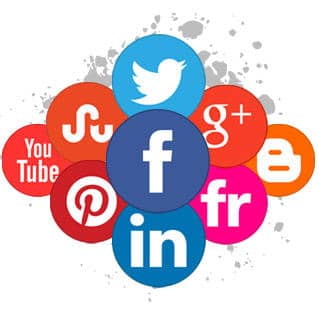In the digital age, the way people connect and conduct business has changed. The rise of the digital age has changed how businesses do networking. It has paved the way to foster more vital and more diverse connections in business.
The handshake was the ultimate symbol of trust and partnership. Today, business connections have expanded from the physical to virtual and holographic realms.
Gone are the days of relying on traditional in-person meetings and handshakes. The digital age of networking has opened doors to unprecedented connectivity. It lets professionals cross boundaries and connect in ways never before possible.
This article gets into the fascinating journey of business connection strategies. Examine how digital tools and platforms are transforming business relationships and operations.

The Digital Revolution: A Shift to Virtual Connections
Networking is the cornerstone of success in the business world. It involves attending conferences, industry events, and business meetings. These are still valuable but limited by geographical boundaries and time constraints. Networking has evolved, expanding beyond in-person interactions to encompass online engagement.
For a long time, shaking hands has been a common way to introduce and make deals in the business world. It represents trust, sincerity and the start of a partnership. A firm handshake was often seen as a reflection of one’s character and reliability.
The advent of the internet and digital technology altered how we connect in business. People seek help from groups like an Association Management company for their business. These companies assist businesses in turning challenges into opportunities.
They also assist in recruitment, development of marketing plans, and production of events. These platforms have become an essential tool for establishing and maintaining professional relationships.
The Rise of Social Media: Building Connections
In recent years, social media has become essential for businesses and organizations as well. It offers opportunities for communication and digital marketing. Popular websites like LinkedIn, Twitter and Instagram are great tools.

Here are some key ways businesses can use them;
- LinkedIn: The Professional’s Paradise
LinkedIn is the go-to platform for professionals. It’s like an online resume where people can show their skills. They can also connect with others in their field and keep up with industry news. By joining and sharing helpful content, they can make themselves look more professional and trustworthy.
- Twitter: Real-Time Networking
Twitter is famous for its quick updates. To connect with influential people in the industry, like experts and leaders, people can do this:
- Share their posts
- Comment on what they say
- Retweet their tweets
This will help them be seen and make essential connections.
Also Read: 4 Reasons Your Business Needs a Twitter Account
- Instagram: Visual Storytelling
Instagram isn’t just a platform for sharing personal photos. It can be a tool to showcase a company’s products and services. By creating engaging visuals and stories, you can attract potential clients and partners.
Also Read: 6 Strategies For Organic Instagram Growth in 2023
Tips for Leveraging Social Media for Business Connections
In today’s digital world, social media is more than a way to talk to people. It emerged as an indispensable tool for businesses, regardless of size. Many platforms have changed how businesses connect with people. They help brands become more visible and sell things.
However, being on social media isn’t enough anymore to get all its benefits. For you to take your business to the next level, there are essential things to know. To get the most out of it, companies need a plan that fits their goals.

Here are some ways businesses can make the most of social media and do well.
- Defining the Target Audience
To start an effective plan, companies must figure out who they want to reach. They need to know how their ideal customers act on social media. This way, they can create content and messages that’ll make them more engaged.
- Engagement with the Audience
Recognizing that social media is a two-way conversation is essential. It’s important to talk back when people message or comment on a business post. Companies can also ask people for their opinions and run polls and surveys to get more information.
- Leveraging Influencers
Influencer marketing is a popular way for businesses to reach new people and gain trust. It involves finding experts and working with them to make content that talks about the brand. This is an excellent plan to help a business grow.
- Strategic Use of Hashtags
Hashtags are a powerful means of expanding reach and visibility on social media. When a business uses the right hashtags, its posts will get views from users who care about the topic.
- Hosting Contests and Giveaways
Contests and giveaways are effective for boosting engagement and attracting new followers. Offering prizes aligned with the brand and asking users to like, share, or comment on posts for entry are engaging tactics.
- Monitoring and Measuring Results
Regular monitoring and measurement of results are imperative to gauge the effectiveness of a social media strategy. Using analytic tools to track followers, engagement and conversions allows for adjustments.
- Staying Up-to-Date with Trends and Changes
Social media evolves, with new trends, features and algorithms emerging. To stay ahead in the game, it’s crucial to keep learning and stay updated on new things. It’ll allow you to adjust your plans as needed.
- Authenticity and Transparency
Authenticity and transparency are vital. Building trust with the audience involves:
- Sharing the brand’s values and mission
- Transparency in Products and Services
- Constructively responding to feedback and criticism
Also Read: How Social Media Can Benefit Small Businesses
Holographic Meetings: A Glimpse Into the Future
Virtual reality (VR) and augmented reality (AR) have made virtual connections even better. In the business world, they’re used for meetings, teaching and showing how products work.
The most recent leap in business connection strategies is the use of holograms. This technology lets people join meetings and conferences as 3D versions of themselves. It makes people feel like they’re present physically.
It’s more than regular video calls can do. Also, using holograms enhances engagement, information retention and participation. Andrew Dorcas, the Senior VP of Sales and Marketing at ARHT, explains this during a technology demonstration.

Conclusion
The digital age has introduced significant changes to business connection strategies. As technology advances, people can expect new tools, platforms and strategies to emerge.
Professionals must adapt and embrace these changes to stay competitive and relevant. Embracing these changes can lead to stronger and more dynamic business connections. Ultimately, this will contribute to the professional success of each individual and organization.
In the future, people can expect even more innovative ways to build connections. Still, respect, professionalism and engagement will remain the foundations of successful business relationships.